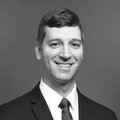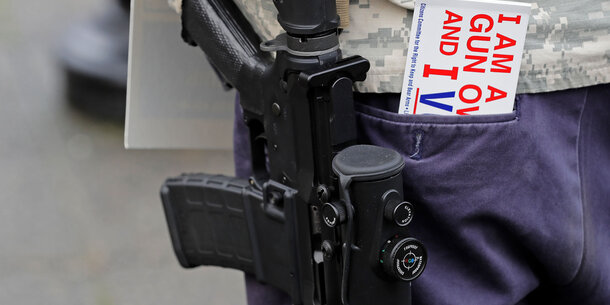In 2018, Yale Law School professor Akhil Amar penned an op-ed in The New York Times titled “A Liberal’s Case for Brett Kavanaugh.” It was a big deal at the time: a renowned liberal law professor endorsing a Republican nominee who would move the Supreme Court in a conservative direction. Amar noted approvingly that Justice Kavanaugh was and would continue to be “an avid consumer of legal scholarship.”
Nearly seven years later, Amar’s prediction has largely come true — but perhaps not in the way he expected. Especially in Second Amendment cases, Kavanaugh and his conservative colleagues on the Court increasingly rely on legal scholarship and even actively solicit more of it. While historically, judges critiqued legal scholarship as overly abstract and theoretical, it is now in vogue in gun cases. Exploring why may offer lessons for those seeking to influence outcomes in other areas of constitutional law.
The judicial critique of legal scholarship is well established. In one high-profile example, Chief Justice John Roberts quipped, “Pick up a copy of any law review that you see and the first article is likely to be, you know, the influence of Immanuel Kant on evidentiary approaches in 18th-century Bulgaria, or something, which I’m sure was of great interest to the academic that wrote it, but isn’t of much help to the bar.” The chief justice was hardly alone. Justice Stephen Breyer, for example, once sarcastically observed that “there is evidence that law review articles have left terra firma to soar into outer space.”
Not so for the Second Amendment. Ever since the Supreme Court decided the landmark gun rights case District of Columbia v. Heller in 2008, legal scholarship has featured prominently in court opinions. We tested this apparent trend during the 2023–2024 Supreme Court term: In the Second Amendment case United States v. Rahimi, the justices cited 25 law review articles, far exceeding the average of just 4 cited in other cases. Only in Loper Bright Enterprises v. Raimondo, which overruled a legal doctrine that had stood for 40 years, did the justices rely more heavily on legal scholarship. This should be unsurprising given that overturning long-standing precedent is a context often linked with a larger number of scholarly citations.
We found that jurists typically rely on scholarly articles in one of four ways in Second Amendment cases: to support factual or descriptive assertions, to inform doctrinal analysis, to guide them on the principles or theory underlying constitutional provisions, and to summarize trends in the lower courts.
However, we also observed a fifth form of scholarship reliance that features prominently in Rahimi. Rather than merely citing scholarly articles for their content, justices are also inviting more scholarship. In a concurring opinion in Rahimi, for example, Kavanaugh noted the outstanding debate over the proper role of post-ratification history in Second Amendment cases. Instead of trying to resolve that debate, he observed that “respected scholars are continuing to undertake careful analysis” of the issue.
Why have jurists been quicker to rely on academic literature in Second Amendment opinions than in others? Why have they singled out this area of law for what we call “judge–scholar collaboration”?
Two possibilities relate to unique features of Second Amendment law. First, the Second Amendment is still very much in the nascent stages of constitutional development. Federal courts did not regularly consider cases directly involving the amendment until the Court controversially decided a pair of major cases in 2008 and 2010. Second, the Supreme Court now relies solely on history and tradition to decide gun cases, without considering whether legislation furthers important modern interests or is well suited to those aims. Sole reliance on history and tradition does not control in other individual rights contexts, though an increasing number of judges suggest it should. These characteristics both point to novelty and thus can explain why judges often aren’t leaning on past opinions, their usual go-to source for authority. In the absence of judicial precedent, judges are turning to the academy in Second Amendment cases.
A third, and related, explanation is the role of two legal movements. The first is, of course, the gun rights movement. Scholars have documented the success of this movement in transforming the judicial understanding of the Second Amendment, including by funding scholarship. But from Heller to now, the Second Amendment’s development has also drawn on the work of a second legal movement that has received less attention as a driver of gun rights change: a strand of the broader conservative legal movement that advocates for interpreting the Constitution based on its original public meaning and using historical restrictions to determine the scope of constitutional rights (loosely referred to as “originalism”). This second movement, arguably more than the first, explains the heavy use of scholarship in Second Amendment opinions.
The gun rights movement generally did not care how the Supreme Court came around to implementing a broader Second Amendment right. Indeed, many leading gun rights scholars pushed for the adoption of a test that would weigh modern public safety objectives while placing a higher burden on the government to justify its laws — rather than the exclusively historical, originalist frame the Court ultimately adopted. But the Second Amendment, because of its novelty as an enforceable constitutional right, provided a convenient testing ground for originalism in practice without needing to wipe away decades of Supreme Court precedent applying different methodologies — as the Court would have to do in, say, the free speech context. In other words, the work of the gun rights movement and conservative originalist legal movement coalesced around Second Amendment theory and practice.
And the conservative legal movement expended resources to bring together scholars, judges, and advocates. Prominent originalist scholar Larry Solum has argued that the proper implementation of originalist methodologies must “involve the production of originalist scholarship in the academy with consumption of that scholarship by the courts.” And, indeed, as Professor Reva Siegel has described, places like the Heritage Foundation, Claremont Institute, and Georgetown Center for the Constitution have drawn together judges and originalist scholars, including through an originalism “boot camp” for soon-to-be judicial clerks and an “Originalism for Judges” seminar. Current Supreme Court justices participate in that ecosystem, frequently lecturing at originalist-focused events and courses that feature leading originalist scholars. As Siegel explains, “Through these interactions, judges confer prestige on academics, and academics legitimate the practice of judges.”
Through the appointments process, meanwhile, lawyers familiar with originalist scholarship and inclined toward originalist methodologies have become judges. This is especially true of judges appointed during President Trump’s first term, who were often affiliated with the conservative legal movement — one recent study found that “Federalist Society membership was virtually required.” The Federalist Society is comprised of members endorsing different legal approaches, but originalism has arguably become the most prominent among them.
When judges look for legal authority, familiarity with a scholarly source — and, perhaps, with that source’s author — may be a strong indicator of whether a judge feels comfortable citing that source in an opinion. In this light, it is notable that in Kavanaugh’s Rahimi concurrence, most scholars cited were not Second Amendment scholars but scholars focusing more generally on originalism. As others have noted, the cited scholars represent but a small slice of those within the legal academy writing on the relevance of tradition to constitutional law, excluding, in particular, many progressive-leaning academics.
There are many takeaways from evaluating the scholar–judge interplay in the evolution of Second Amendment law, some of which we explore in our longer companion piece. One that we highlight here is how that interplay provides a model for other legal movements. Part of the model is organizational: Myriad well-funded opportunities exist for conservative legal scholars, practitioners, and judges to gather, share ideas, and collaborate. For example, events held by the Federalist Society to generate ideas and promote collaboration within conservative circles occur regularly throughout the year and at law schools across the nation. Such events, taking place over many years or decades, can have a profound impact on the understanding of the Constitution and constitutional doctrine. They can also naturally forge collaborative networks wherein judges are exposed to and then rely on the work of certain legal scholars.
The progressive legal movement simply does not have the same level of organization. Progressive law professors (and progressive lawyers more generally) may outnumber conservative ones, but the approach taken by the conservative legal movement to effect a change in constitutional understanding has more than compensated for this disparity.
Our goal here is not to take a position on the desirability of collaboration between advocates, scholars, and judges — though that is an important topic of inquiry. Instead, we simply observe that such collaboration exists and can be explained by, among other things, the role of legal movements. An upshot is that organizations seeking different types of change could learn from the success that facilitated the current state of Second Amendment law.
Andrew Willinger is the executive director of the Duke Center for Firearms Law.
Eric Ruben is a professor of law at SMU Dedman School of Law and a fellow at the Brennan Center. His scholarship was cited in the majority opinion and a dissenting opinion in Bruen and in a concurrence in Rahimi.



